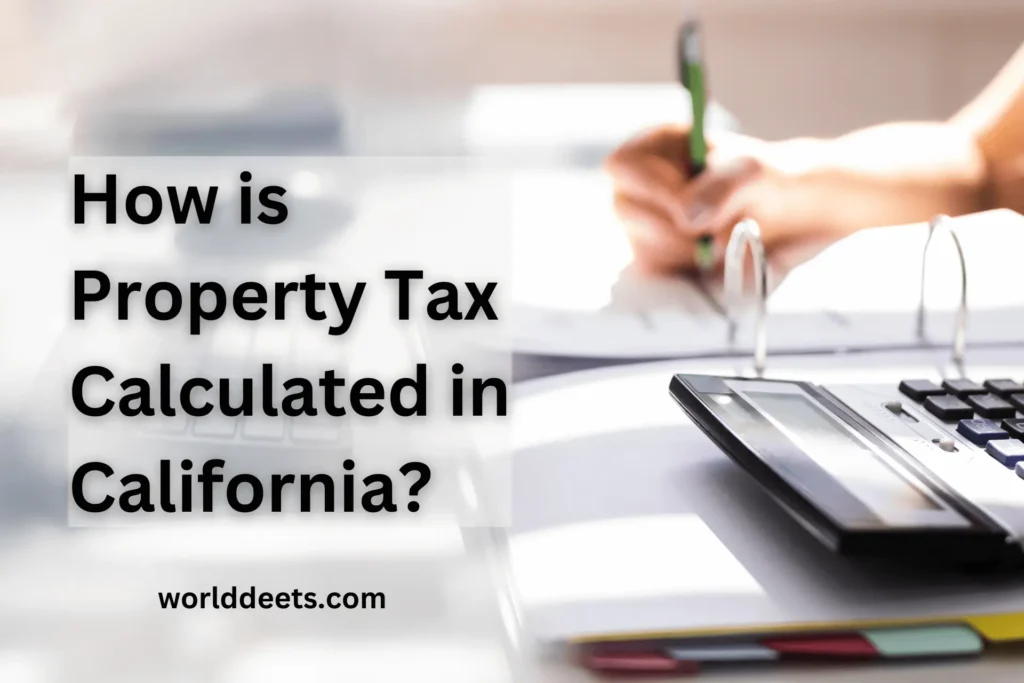Revealing the Mysteries: How is Property Tax Calculated in California?

If you’re a California homeowner or prospective buyer, understanding how property tax is calculated is crucial for managing your finances. In this article, we’ll delve into the details of how is property tax calculated in California, covering key aspects such as the amount you can expect to pay, payment frequency, city-specific rates, and even how to use a property tax calculator.
how is property tax calculated in California and How Much it is?
In California, the assessed value of the property and the appropriate tax rate determine the total amount of property tax. Here’s a breakdown of how the process works:
Assessed Value
The assessed value of a property in California is initially set at the purchase price. Proposition 13, a landmark property tax law passed in 1978, limits the annual increase in assessed value to a maximum of 2%. This provides homeowners with a degree of predictability in their property tax obligations, preventing sudden and dramatic spikes in tax payments.
Tax Rate
The rate of property tax is given as a percentage of the building’s value. In California, the tax rate is a combination of rates set by local entities such as cities, counties, school districts, and other local agencies. Different municipalities have different rates, leading to variations in property tax burdens across the state.
Calculation
The property tax for a certain property is found by multiplying the assessed value by the tax amount. The formula is:
Property Tax=(Assessed Value×Tax Rate)/100Property Tax=(Assessed Value×Tax Rate)/100
For example, if the assessed value of a property is $500,000 and the combined tax rate is 1.2%, the property tax would be: \text{Property Tax} = (500,000 \times 1.2) / 100 = $6,000
Additionally, various exemptions and deductions are available in California, such as the homeowner’s exemption, which can reduce the assessed value of the property and, consequently, the property tax amount.
For the most accurate and up-to-date information regarding property tax in a specific location in California, homeowners should contact their county assessor’s office or explore online resources provided by local government agencies.
California Property Tax Rate by City
The property tax rate in California varies by city and county, as it is determined by a combination of rates set by local entities, including cities, counties, school districts, and other local agencies. Different municipalities have different tax rates, leading to variations in property tax burdens across the state. Here’s an overview of how property tax rates can differ by city in California:
- Local Factors: Property tax rates are influenced by local factors such as the needs of the community, the budgetary requirements of local government entities, and voter-approved initiatives. Cities and counties may have different priorities, which can impact the property tax rates set within their jurisdictions.
- Education Funding: School districts play a significant role in property tax rates. The funding needs of local schools are often a major factor in determining the overall property tax rate. Areas with higher funding requirements for education may experience higher property tax rates.
- Infrastructure and Services: The property tax rate is also influenced by the local government’s commitment to providing essential services and maintaining infrastructure. Cities with ambitious development plans or a need for extensive public services may have higher property tax rates to support these initiatives.
- Voter-Approved Measures: In some cases, voters may approve special assessments or bond measures that can impact the property tax rate. These measures are typically designed to fund specific projects or services, and the associated tax rates are set based on the needs identified in the ballot initiatives.
How Often Do You Payc?
Generally, property taxes in California are paid on a biennial basis. For property tax purposes, the fiscal year runs from July 1 to June 30; payments are due in two installments:
- First Installment: The initial payment is payable as delinquent if not received and credited by December 10th, which is due on November 1st. Property taxes for the period of July 1st to December 31st are covered by this payment.
- Second Installment: The second installment is payable in arrears if not repaid by April 10th, which is after the due date of February 1st. This payment covers property taxes for the period from January 1st to June 30th.
Homeowners need to mark these dates on their calendars and budget accordingly to ensure timely payments. Delinquent payments may result in penalties and interest charges.
The semi-annual payment structure provides homeowners with a predictable schedule for managing their property tax obligations. This system is designed to align with the fiscal year and helps local governments receive a steady stream of revenue to fund essential services.
Homeowners can check with their county assessor’s office or visit the official website of the county where their property is located for specific details about payment methods, deadlines, and any additional information related to property tax payments. Additionally, staying informed about changes in property tax rates or assessment practices is crucial for effective financial planning.
Related: You can also explore Who Owns The Property In A Life Estate?
Wrapping Up
In conclusion, unraveling the intricacies of how is property tax calculated in California is essential for homeowners and prospective buyers alike. From understanding the assessed value and tax rates to exploring city-specific variations and the impact of Proposition 13, this guide aims to empower individuals with the knowledge needed to navigate the complex landscape of property taxation in the Golden State. Armed with insights into payment frequency and the factors influencing property tax rates, homeowners can make informed financial decisions and ensure timely payments. For the most accurate and up-to-date information, residents are encouraged to consult their county assessor’s office and leverage online resources provided by local government agencies. By staying informed, California homeowners can confidently manage their property tax obligations and contribute to the continued fiscal well-being of their communities.






